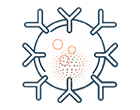Kanegane, H., Imai, K., & Morio, T. (2017). Nihon Rinsho Men’eki Gakkai kaishi = Japanese journal of clinical immunology, 40(3), 145–154. https://doi.org/10.2177/jsci.40.145
Fischer, A., Notarangelo, L. D., Neven, B., Cavazzana, M., & Puck, J. M. (2015). Severe combined immunodeficiencies and related disorders. Nature reviews. Disease primers, 1, 15061. https://doi.org/10.1038/nrdp.2015.61
Justiz Vaillant, A. A., & Mohseni, M. (2020). Severe Combined Immunodeficiency. In StatPearls. StatPearls Publishing.
Cossu F. (2010). Genetics of SCID. Italian journal of pediatrics, 36, 76. https://doi.org/10.1186/1824-7288-36-76
Rivers, L., & Gaspar, H. B. (2015). Severe combined immunodeficiency: recent developments and guidance on clinical management. Archives of disease in childhood, 100(7), 667–672. https://doi.org/10.1136/archdischild-2014-306425
Zhang, C., Zhang, Z., Wu, J., Tang, X., Yang, X., Jiang, L., & Zhao, X. (2011). Clinical characteristics and mutation analysis of X-linked severe combined immunodeficiency in China. World Journal Of Pediatrics, 9(1), 42-47. doi: 10.1007/s12519-011-0330-4
Sponzilli, I., & Notarangelo, L. D. (2011). Severe combined immunodeficiency (SCID): from molecular basis to clinical management. Acta bio-medica : Atenei Parmensis, 82(1), 5–13.






